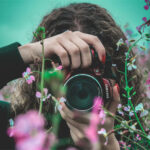
"the orange" captured by mawanmalvin (click image to see more from mawanmalvin)
Filters are very underestimated, and these days since you can add them in Photoshop many photographers don’t even try them anymore. However, filters still play a very important role, and if you can understand how filters work and what they can be used for, you will be able to capture photographs in a way you never imagined.
There are a number of filters that photographer’s use most of the time and even combinations of different filters are occasionally used to get the desired effect. The size of the filters depend on the diameter of the lens and they usually are like; 49mm, 52mm, 55mm, 67mm, 77mm, and so on. The most common filter is the UV filter that cuts out harmful rays and acts as a protection for your lens. Always have a filter on your lens; having a filter get scratched is a lot better than getting your lens scratched.
Moving on, let’s take a look at different filters and what effect they can create:
• Polarizing Filter: A polarizing filter cuts reflections from water or glass which gives a subtle look and objects do not appear very shiny. It also enhances colors and reduces haze. Polarizing filters are very useful when taking photographs indoors. You may have experienced that when you take a picture of a person wearing glasses their eyes don’t show since the reflection from their glasses obscures them, a polarizing filter will cut out the reflection and the persons’ eyes won’t be obscured any more.
• Neutral Density Filters: These filters reduce the amount of light entering the camera which gives you the benefit of taking a longer exposure; it is good if you want to take a picture of flowing water like waterfalls, or streams, the resulting image will make the water very smooth. These filters come in 0.3, 0.6, and 0.9, which lowers the f-stop by 1, 2, and 3 respectively.
• Warming & Cooling Filters: These filters were more useful when using film, with digital cameras however, the use of these filters become somewhat redundant since you can set the white balance according to your needs and that takes care of the warmth or the cool.
• Enhancements Filters: These come in Red, Blue, Green, and enhances that particular color. There is a sepia filter as well, which makes photos have an old look, however, this filter has become redundant as well since you can add the sepia from an image enhancement software and even from your digital camera. However many photographers prefer the authentic look of using a filter over softwware.
• Graduated Color Filters: These filters can make landscape photographs look even more beautiful, you can make the skies bluer, or you can add a really nice golden to a sunset or a sunrise. These filters come in a variety of colors.
There are many more filters as well, such as infra-red, for macro shots, star effects, dual color, soft effects and other special effect filters. However, most of these effects can be achieved using Photoshop or some other photo editing software with similar results. Here is another interesting article about the various types of filters: http://www.ehow.com/facts_5180748_types-lens-filter.html. I would recommend the use of polarizing filters, neutral density filters and graduated color filters with your DSLRS.
About the Author:
James Johnson is an expert online author and has a profound love and passion for photography.
Like This Article?
Don't Miss The Next One!
Join over 100,000 photographers of all experience levels who receive our free photography tips and articles to stay current:






Leave a Reply